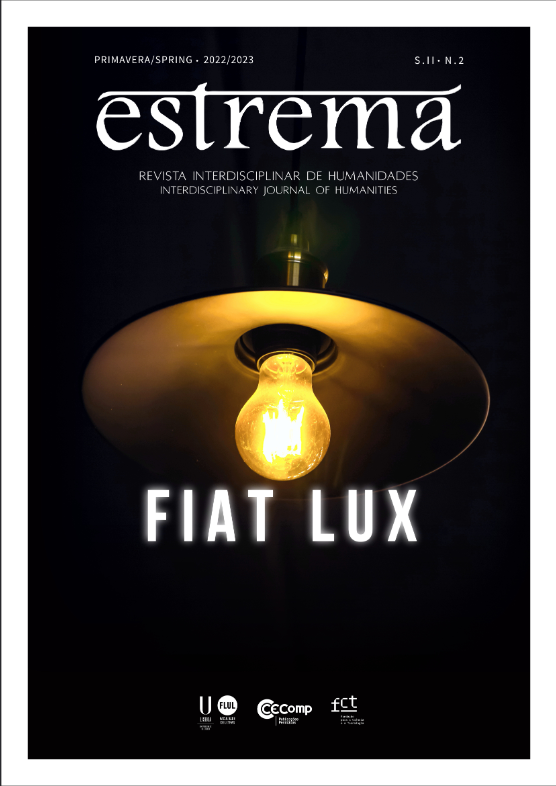Vol. 2 No. 2 (2023): Fiat Lux

Fiat lux! Whether we comprehend the form that the manifestation of the beginning of the world took through religion, physics, biology, literature, or any other way of knowing and thinking, the imagery of the beginning is almost always an imagery of light. On one hand, light breaks the plane of darkness, the plane of that which exists as non-existence – therefore the unclean; on the other hand, light moves, expands what it illuminates from the focal point and, in that movement, reveals and creates. Light makes things visible. If, at the level of language, all beings are enlightened when in the process of creation, in death, or in moments of seclusion, light pushes us towards transgression: we walk towards the light, see the light at the end of a tunnel, seek it.
In its biological, chemical, or even theological nature of experimentation, and even beyond that, light is possibly the most prolific and universal of human symbols, and, as a natural occurrence, even inter-species. It refers to the interstitial space lying between a remote and primordial past and a present that, marked by the pace of its speed, traces possibilities for the future. The place it occupies is therefore a non-place between the agency of revelation and the ontology of what is yet to be revealed. Its function is to unveil, in the sense of the Greek word aletheia – revealing what is hidden, to avoid the fall into the shadows of death (etymologically, a-letheia is the negation of Lethe, the dark river of forgetfulness in Hades). However, in unveiling the unknown world, light does not fail to create shadows, either by projecting them or by highlighting the darkness of hidden corners.
With this in mind, estrema: an interdisciplinary journal of humanities has posed the challenge of essayistic reflection on the theme. This results in the present publication, which, together with its previous number, its counterpart, frames various experiences of reflection within the shadow-light dyad. The Editorial Team hopes that these reflections will enrich the way, particularly in the humanities and more broadly in academia, archetypal and concrete forms, methods, and images are conceived, worked on, and theorised in a transdisciplinary manner. We present a brief overview of the different reflections that make up this issue.
Not least and concluding this introduction, on a more personal note, the Editorial Team, which, with this issue, concludes its mandate, would like to express its gratitude to all those who collaborated with it, both in this issue and the previous one. Thank you very much to all authors, reviewers, members of the Advisory Scientific Council, Secretariat, and the Directorate of the Centre for Comparative Studies of the School of Arts and Humanities of the University of Lisbon, designers, language reviewers, and IT technicians. We also thank, especially, all those who believed in this project and, in various contexts, inspired and motivated us to make it a reality.





